
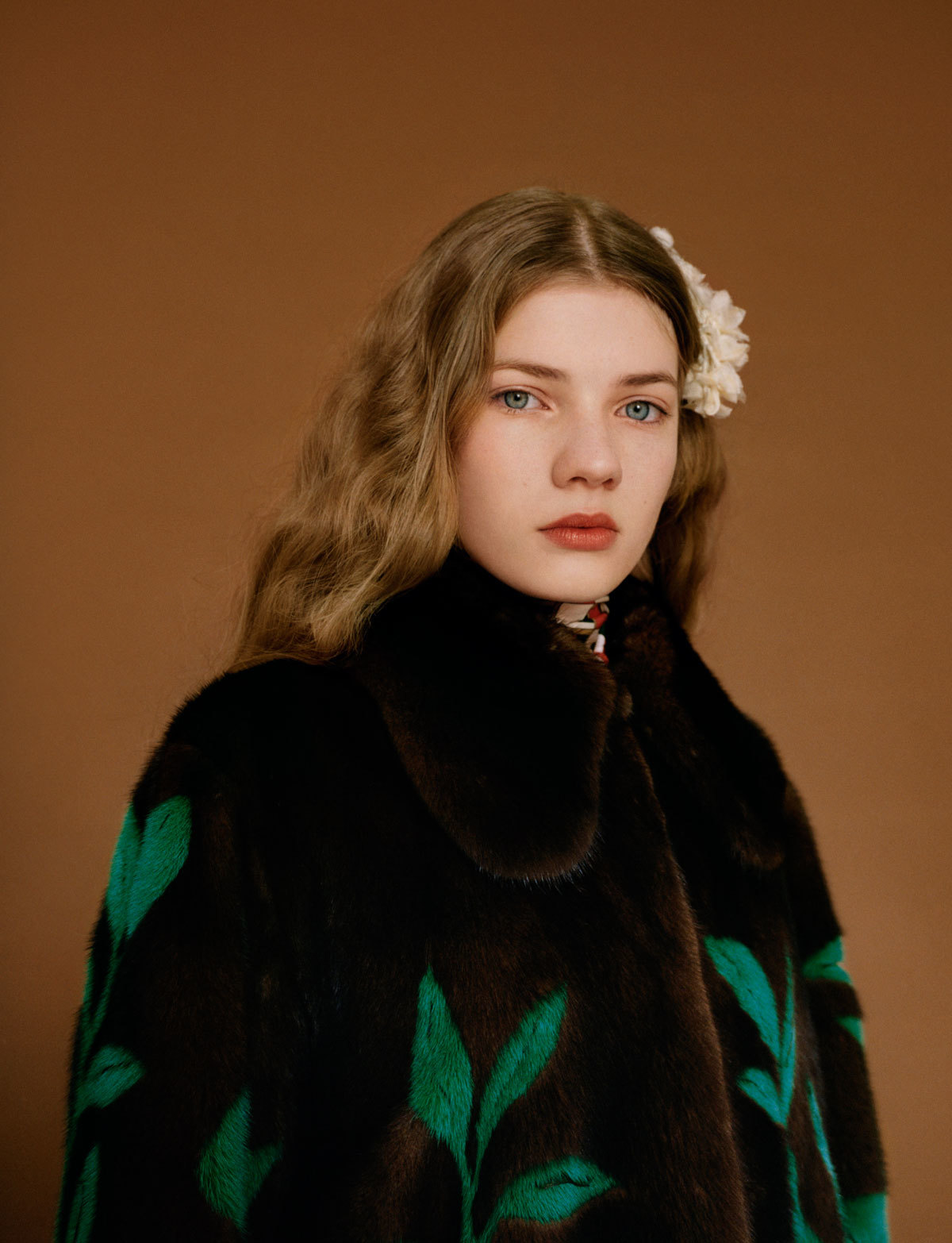
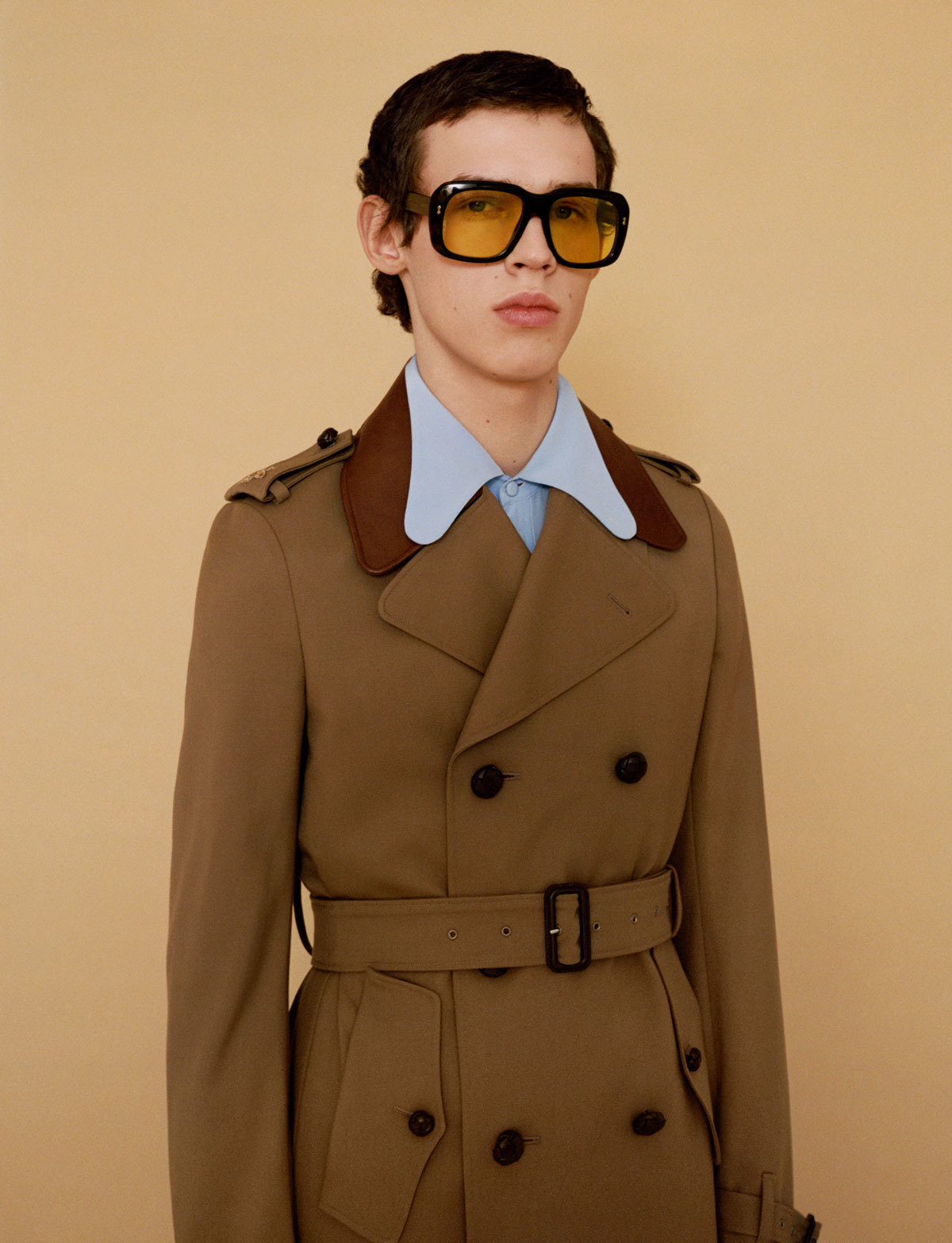
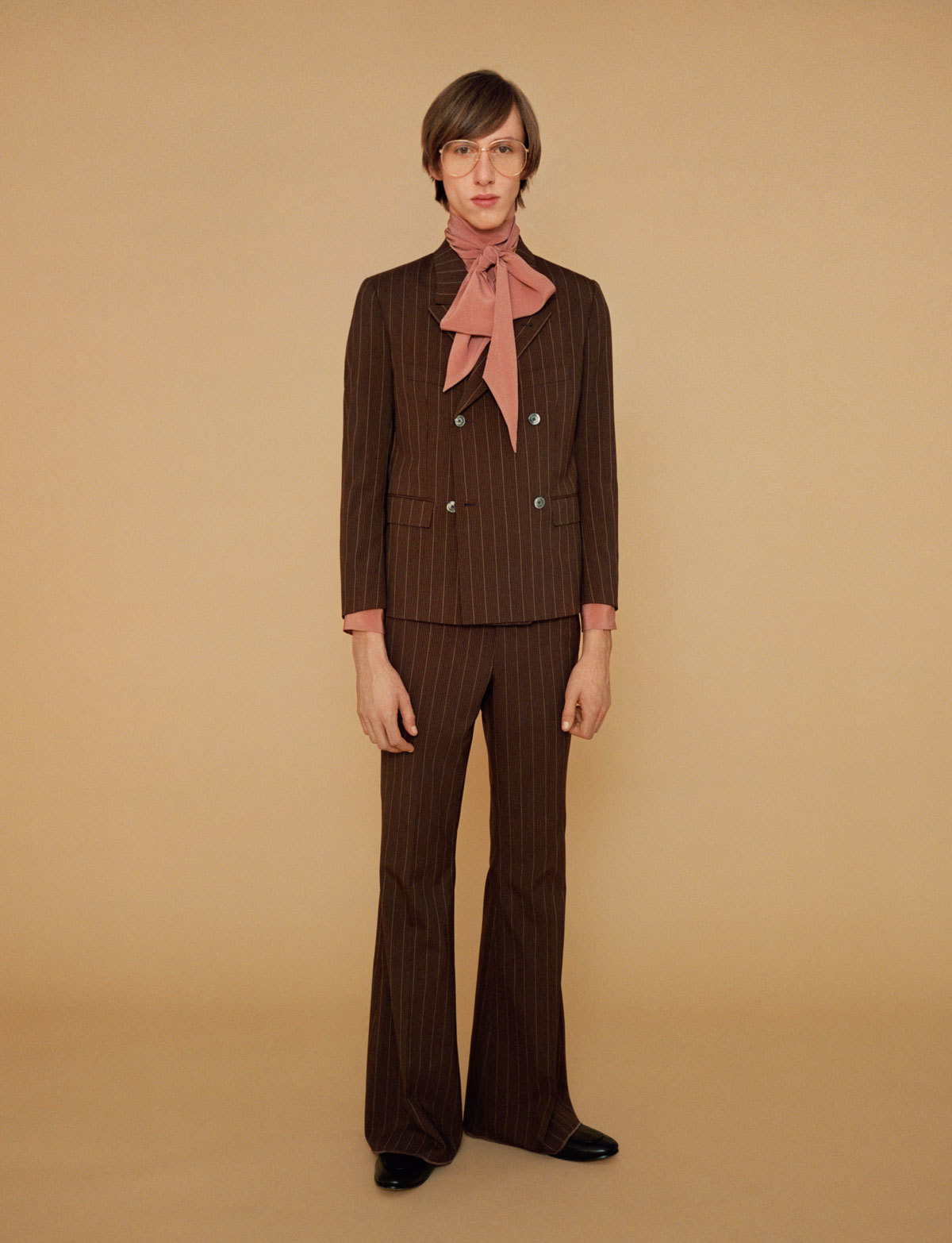
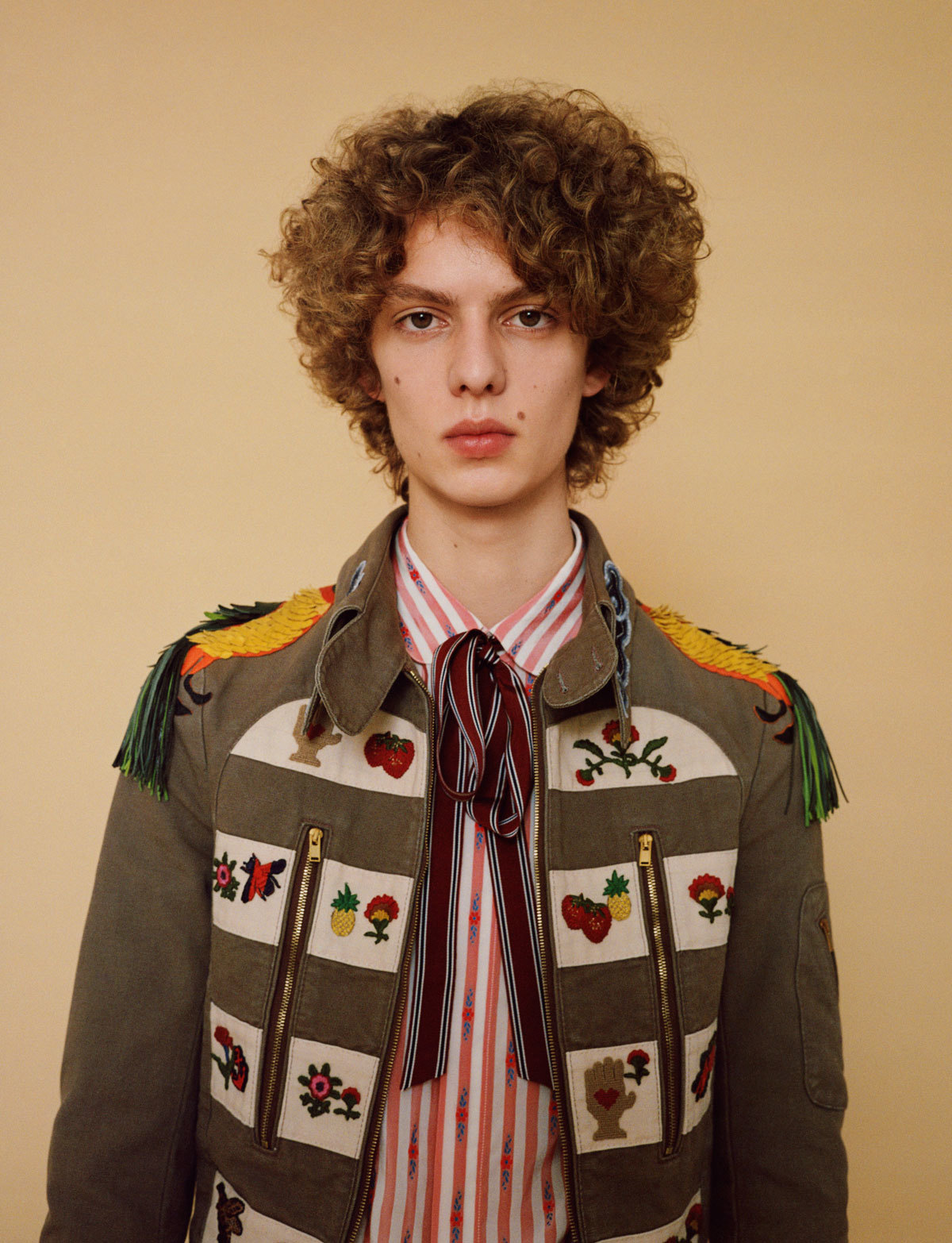
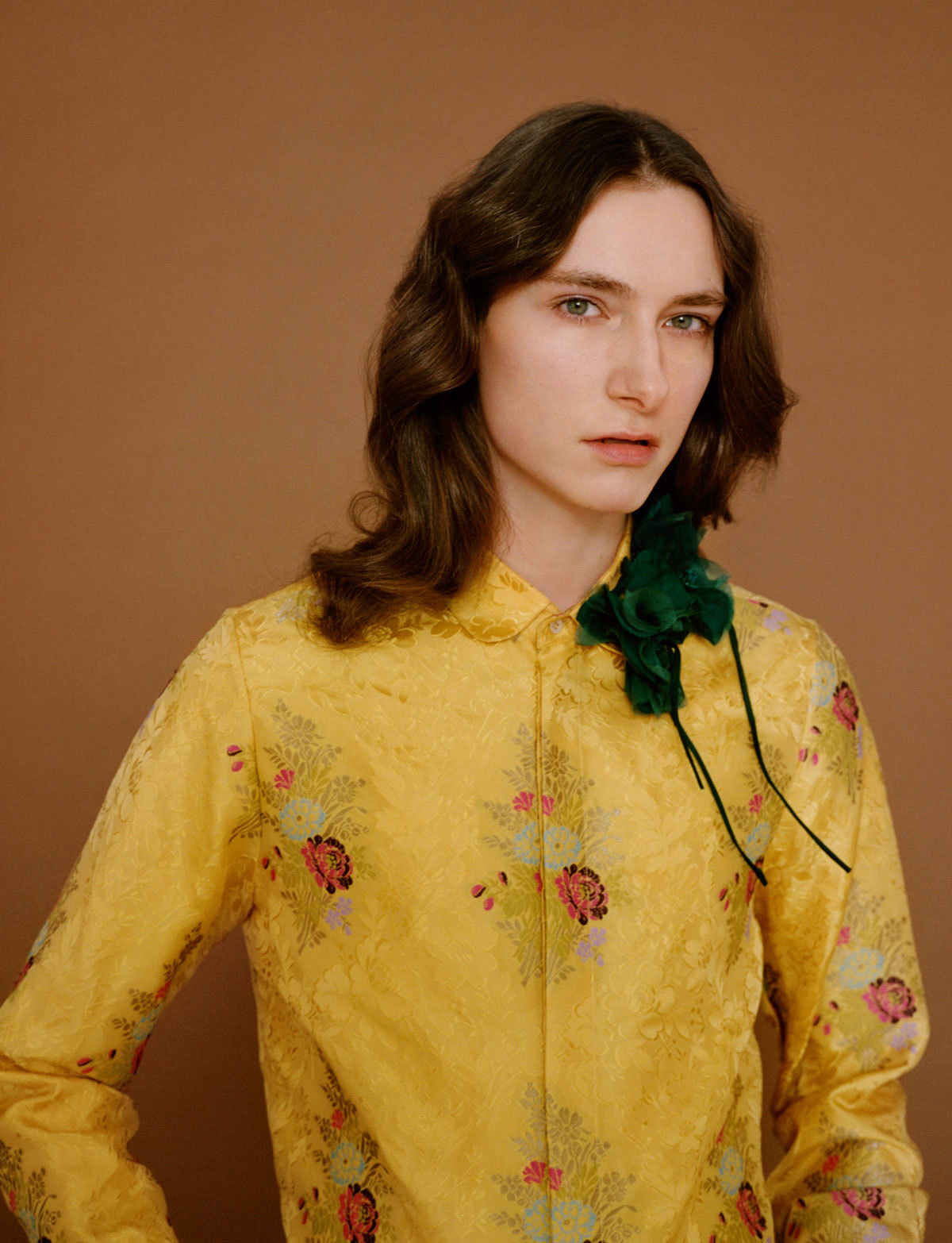
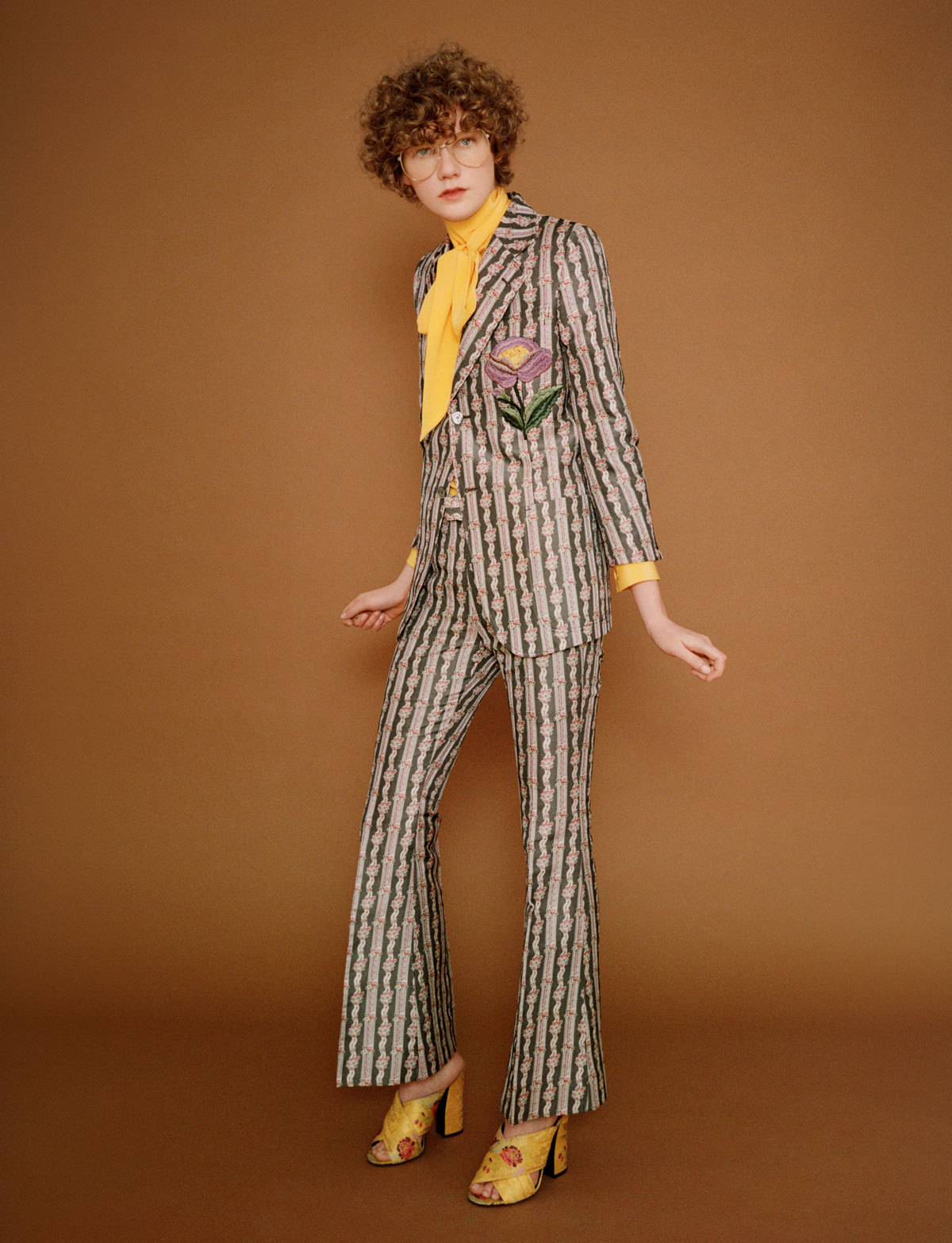

To understand why Alessandro Michele’s historicist debut collections for Gucci over the past year sit so immaculately in contemporary culture, you need only look at his Instagram. Under the moniker @lallo25, he curates his digital mood board with portraits from the Renaissance and the Baroque era, evoking history’s original age of ego and beauty mania in an effortless (and possibly subconscious) parallel between the obsessions he tells me fill his mind like a madman: hyper versions of the past and the present. “I’m like the circus. Every time I try to work on a collection I feel like I’m in a clinic, because I put everything out there. Everything I love.” Speaking to him in Milan hours after his third women’s show for Gucci in February, I can’t forget what he told me after the first one a year before. “This is all I know how to do.” Back then, he was surrounded by the hordes of women’s fashion journalists, who had heard about the unknown designer, who received a standing ovation after his men’s show just weeks before and was already making waves in the industry. Since then, the backstage bedlam has only increased as Alessandro and his prolific sanatorium have created a fashion revolution at Gucci centerd on unapologetic opulence, gender-fluidity and electric nostalgia—simply by doing what he knows best.
“I’m a revolutionary in my idea of revolution: that I just try to let the beauty go. It’s my job. It’s me,” he says. “But I don’t feel like I’m doing a revolution. I live in a revolution. It’s my life.” Observing the look he has a forged at Gucci — waiflike, seemingly gender-less boys and girls dripping in the richness of colors and embellishment from the Renaissance to the 1970s and street style now — you wouldn’t expect him to be casual in a white melange t-shirt and blue jeans, as is the case. He looks princely, like a young Leonardo da Vinci or something out of Arthurian legend: bearded with long and luscious dark curls, a hint of revolutionary in the papal ornate gold rings that virtually armor all his fingers. If there is a hint of Norman warlord to him, he’s certainly protected like one. The armies of Gucci guard their golden revolutionary like he was the grand master of a religious order. Apart from his bi-seasonal backstage audiences, his interviews have been few and far between. It’s a strategy symptomatic of the overworked fashion times we live in where houses are now doing everything in their power not to overexpose and overburden their designers. For Alessandro, it has added a veil of mystery that suits his character well. We know he shares a Rome apartment and a summer home in the mountains with his partner Giovanni Attili, an urban-planning professor, and their two Boston terriers, but that’s about it.
His curriculum vitae is more documented: born in Rome in 1972, Alessandro studied at the city’s Academy of Costume and Fashion, and worked for Silvia Venturini’s Fendi before Tom Ford hired him at Gucci in 2002. Upon Frida Giannini’s abrupt departure in early 2015, he presented his vision for the house to the new CEO Marco Bizzarri, and the rest is history. In Alessandro Michele terms, of course, that saying speaks volumes. Watching his hyper-referential and deeply ceremonious shows for Gucci is like stepping into a splendid cathedral, every aged surface gilded or covered in some unbelievable fresco. Through his trippy, slightly psychedelic eye of contrasts — old and new, hard and soft — it often reminds me of the Sacred Heart motifs you find in catholic art — those velvety blood-red hearts wrapped in barb-wire-y thorns and framed in gold — which could as easily sit on a biker jacket circa right now as they could a glass-stained window from the Middle Ages You’ve got to surrender. “I’m obsessed with what’s happening around me. I am always in a balance between the past and the contemporary,” Alessandro says, his English perfect, his warm Italian accent majestic. “I have a big passion for antiques and Old Masters and history of art, and I spend all my life diving into these things. At the same time it’s something that makes me feel very alive. The past is something that inspires me for now—it’s still alive for me. I always say it’s like using a musician’s notes. The same notes can make another song.”
In the campaign for his spring/summer 16 women’s collection, which embodied said Renaissance-to-70s notion, he moved the models out of the throne room and took them to Berlin in a Gucci-fied recreation of scenes from Christiane F., the German cult film about escapist youths in 70s West Berlin, who revel in teen spirit and obsess over David Bowie. (For his fall/winter 16 collection, shown three days after the artist’s death, Alessandro recreated the Bowie tribute jacket worn by the film’s protagonist.) On the gritty backdrop of the film’s visual universe, he nailed his philosophical approach to his work. “I’m obsessed with haute couture and I love the idea of street style. I love the expression of young generations and what naturally happens in the street and in the club, and I try to mix these languages together,” he says. “My idea of richness is that you can be rich in East London. You don’t need to live on Bond Street. Richness is what you want to be, everywhere. And to be obvious, my idea of richness is this: if you have something for you, it’s just for you. This is what it means to be rich.” He says the pieces he designs — which draw the fashion masses to the Gucci flagship store in Milan pondering what lottery they need to win to assemble a full look — should merely be seen as “starting points”—or keepsakes, much in the spirit of Alessandro’s work ethic. “I’m obsessed with few things, and I spend a lot of time on every single piece. It’s a lot like a mad research. If you don’t love it, if it’s not your life, it’s impossible.”
Credits
Photography Angelo Pennetta
Styling Poppy Kain
Text Anders Christian Madsen
Hair Sebastien Ricard at Jed Root
Make-up Niamh Quinn at LGA Management
Photography assistance Jack Day
Styling assistance Ashlee Hill
Hair assistance Timo Bloom
Make-up assistance Catrin Kreyys
Production Lydia Wagner at Made In Germany
Retouching OUTPUT
Models Arthur C, Leon D at Tomorrow Is Another Day. Elvis Jankus, Iramax at Core Management. Fritz Alm at Viva. Linda P at PMA. Maximilian Bungarten at Izaio Management. Marland Backus, Bara Podzimkova at Elite London.
All clothing Gucci
